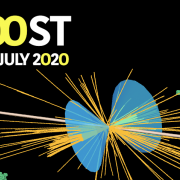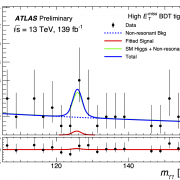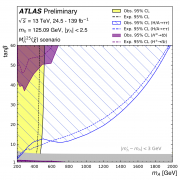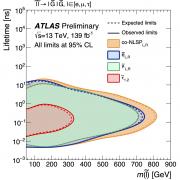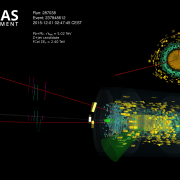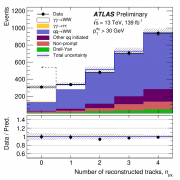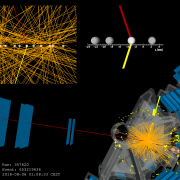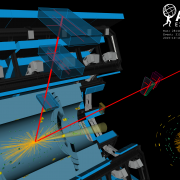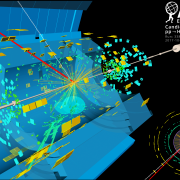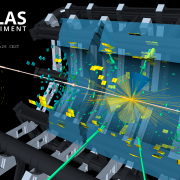Access to Collaboration Site and Physics Results
Updates tagged: “new physics”
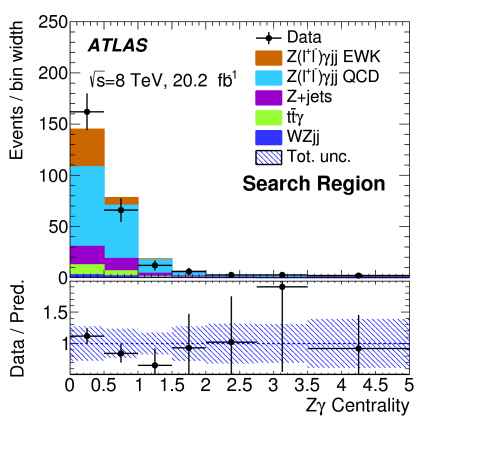
New insight into the Standard Model
Ever since the LHC collided its first protons in 2009, the ATLAS Collaboration has been persistently studying their interactions with increasing precision. To this day, it has always observed them to be as expected by the Standard Model. Though it remains unrefuted, physicists are convinced that a better theory must exist to explain certain fundamental questions: What is the nature of the dark matter? Why is the gravitational force so weak compared to the other forces?
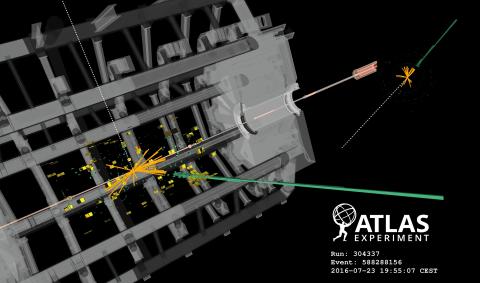
Searching for new symmetries of nature
The fundamental forces of nature are intimately related to corresponding symmetries. For example, the properties of electromagnetic interactions (or force) can be derived by requiring the theory that describes it to remain unchanged (or invariant) under a certain localised transformation. Such an invariance is referred to as a symmetry, just as one would refer to an object as being symmetric if it looks the same after being rotated or reflected. The particular symmetry related to the forces acting among particles is called gauge symmetry.
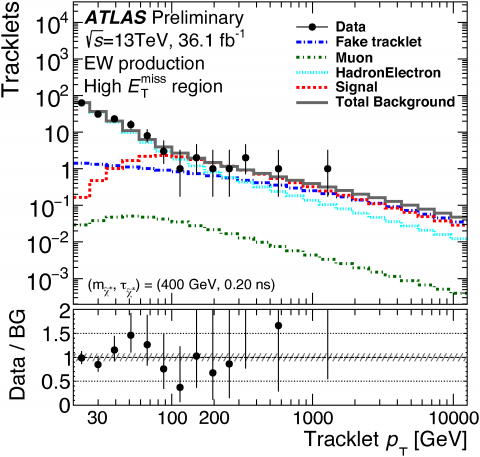
Quest for the lost arc
Nature has surprised physicists many times in history and certainly will do so again. Therefore, physicists have to keep an open mind when searching for phenomena beyond the Standard Model.
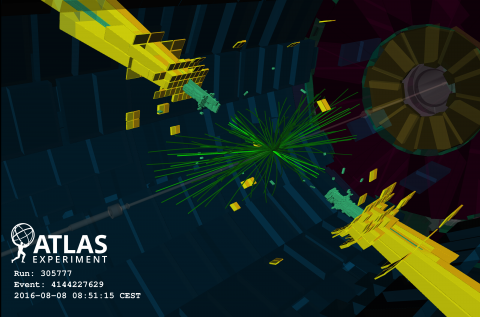
Particle-hunting at the energy frontier
There are many mysteries the Standard Model of particle physics cannot answer. Why is there an imbalance between matter and anti-matter in our Universe? What is the nature of dark matter or dark energy? And many more. The existence of physics beyond the Standard Model can solve some of these fundamental questions. By studying the head-on collisions of protons at a centre-of-mass energy of 13 TeV provided by the LHC, the ATLAS Collaboration is on the hunt for signs of new physics.
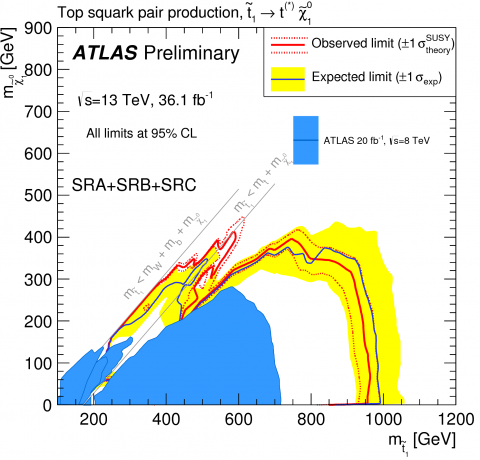
Searching for signs of the “stop”
In new results presented at the Moriond Electroweak conference, the ATLAS Collaboration has sifted through the full available data sample of the LHC’s 13 TeV proton collisions in search of a specific SUSY particle: the heavy partner to the top quark, called the “top squark” or “stop”
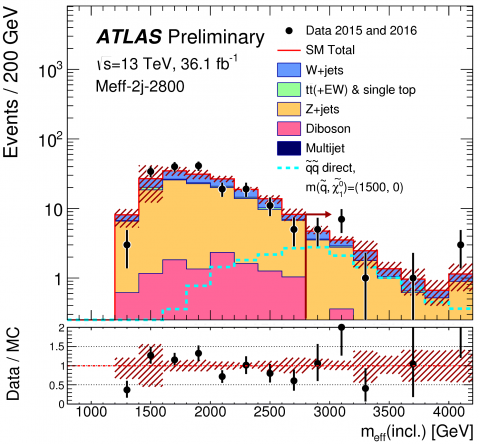
The search for super-particles continues!
Many of the most important unanswered questions in fundamental physics are related to mass. Why do elementary particles, which we have observed and measured at CERN and other laboratories, have the masses they do? And why are they so different, with the mass of the top quark more than three hundred thousand times that of the electron? The presence of dark matter in our universe is inferred because of its mass but, if it is a particle, what is it? While the Standard Model has been a tremendously successful theory in describing the interactions of sub-atomic particles, we must look to even larger masses in search of answers and, potentially, new supersymmetric particles
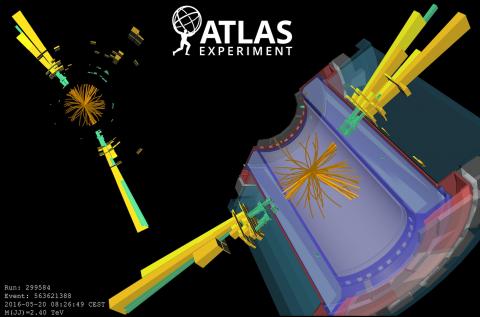
Hunting for new physics with boosted bosons
The Standard Model is a tremendously successful theory that describes our best understanding of elementary particles and their interactions, and even predicted the existence of the Higgs Boson. It does not however explain ~95% of the known universe – including dark matter and dDark energy – and does not include a description of gravity.

High-mass di-photon resonances: the first 2016 ATLAS results
One of the highlights of last year’s physics results was the appearance of an excess in the search for a new particle decaying into two photons ("the di-photon channel"). New results in this channel were presented at the ICHEP conference in Chicago on Friday, 5 August.

Further progress in the quest for SUSY particles
ATLAS physicists have been eagerly searching the collected data for evidence of the production of the supersymmetric top quark (squark). Recent ATLAS results feature five separate searches for this elusive particle.

Searching for new phenomena in final states with missing momentum and jets
The nature of dark matter remains one of the greatest mysteries in physics. While extraordinary, the Standard Model can not explain dark matter, whose existence is well established by cosmological measurements.





